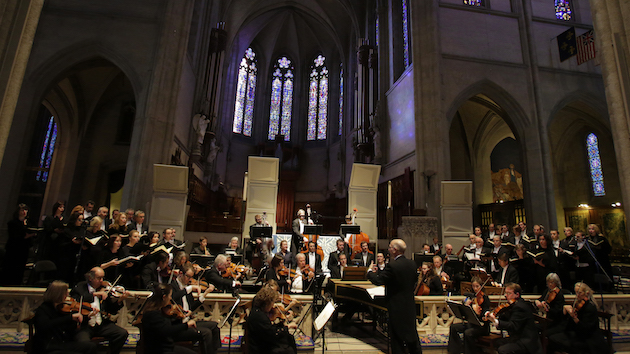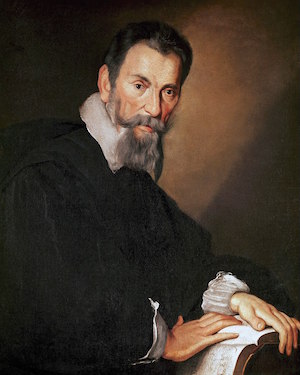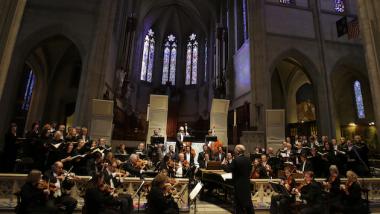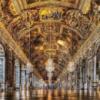
Eight years ago, on its 400th anniversary, Monteverdi’s Vespro della Beata Vergine (1610) was all over the place in the early music world. Once again, scholars, conductors, and performers plunged into the thickets of controversy about which, in what order and how the disparate pieces of these remarkable Vespers ought to be heard.

With a little distance from all that, the American Bach Soloists undertook performances April 6–9 that made no pretense whatsoever to Monteverdian authenticity, if such a thing is even possible. A glance at the program was enough to confirm it, with both instrumental and vocal works by Giovanni Gabrieli bracketing sections of the Vespers.
Not only that, as Artistic and Music Director Jeffrey Thomas freely acknowledged in his characteristically informative and engaging program essay, but ABS was excising both the Missa — “an absolute masterwork in all respects,” in Thomas’s phrase — and two settings of the Magnificat. That said, after the vivid and often ravishing concert heard Sunday at St. Mark’s Lutheran Church in San Francisco, only a pedantic purist would quarrel with the choices.
What mattered here, what seemed Monteverdian in the most gratifying sense, was the sheer munificence of the music. Whether in a single-voice motet, multivoice psalms, or a stately and elegant hymn that proved at once tender and theatrical, the composer’s genius for layering lines and building them into gleaming musical edifices was on full display. A listener could delight in the most attentive detail, such as the sliding vowel sounds in Psalm 110 or the echo effects in the motet “Hear, o Heaven, my words full of longing and suffused with joy,” or sit back and let the shimmering musical moods and energies take over like climatic and atmospheric changes pouring through the reverberant sanctuary.
As for Gabrieli, the instrumental canzonas and an opening “In ecclesiis” provided glamorously decorated interpolations. A conversation of two cornettos, carried off with skill and panache by Alex Opsahl and Kiri Tollaksen on those appealingly curved and delightfully squawky instruments, was especially welcome. The echoes in that Canzon, C. 181 anticipated those soon to come in the Monteverdi motet. Only Gabrieli’s closing Magnificat, complexly drawn as it is, seemed to toil a bit. It would have been nice to let Monteverdi have the last word.

When Thomas and his complement of ten singers and a compact orchestra dug into the Vespers, they kept revealing the varied aspects of the work. In the opening versicle and response, the orchestra sounded those jubilant up-rushing figures that are such an audible watermark of the piece. The six vocal lines played off against each other in both giddy exclamation and becalmed repose.
Tenor Nils Brown, who was the closest thing to a vocal soloist in this deeply communal effort, gave the solo motet “I am black but comely, O ye daughters of Jerusalem” a highly characterized reading. Even the raw patches in his singing lent a further measure of human feeling.
Soprano Katelyn Aungst sang with particular purity of tone. She and her fellow soprano Julie Bosworth gave their duo motet, “Fair art thou, my love, beautiful and comely,” grace and dynamic sensitivity.

There was a lot of commuting about during the performance, as both singers and instrumentalists kept trading places and positions to achieve the desired balance and contrast of effects. It all seemed orderly and purposeful and never fussy. With its plush acoustics. St. Mark’s proved to be ideal architectural setting for the afternoon.
The church was nearly full for this splendid concert. That added an extra air of urgency to this freshly conceived and movingly realized masterpiece. Reverent as it may be — and also robustly sensual — this enduring masterpiece doesn’t need to be treated reverentially. Thomas and his inspired ABS forces made that apparent in this Gabrieli-enhanced account. At 408 years and counting, dressed up here in a new fashion, the Monteverdi Vespers aren’t showing their age at all.




